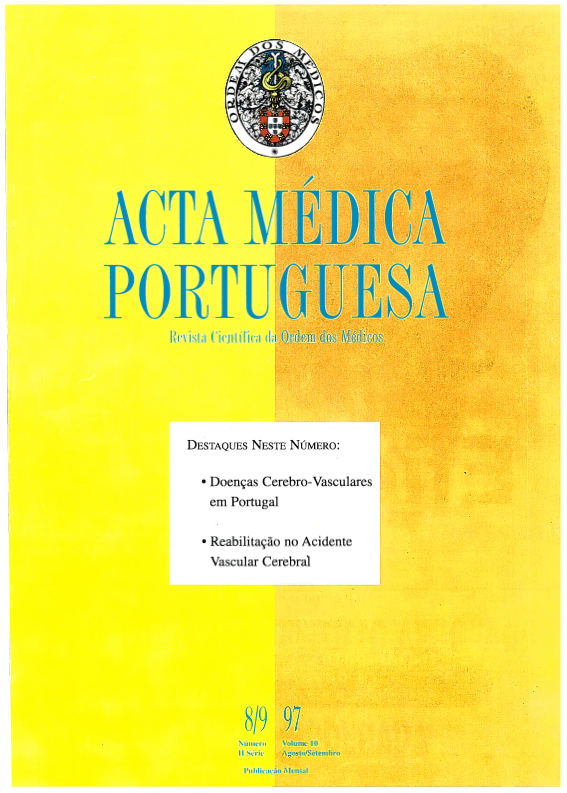Tratamento endovascular dos aneurismas e malformações arteriovenosas cerebrais.
DOI:
https://doi.org/10.20344/amp.2458Resumo
Despite the progress made in cerebral aneurysm microneurosurgery, some morphologic and anatomic characteristics, or also clinical reasons, make surgical clipping of the aneurysmatic column difficult or unfeasible, justifying an endovascular therapeutic alternative. Despite the great progress made, the risk of endovascular intervention with microballoons is significant, particularly in the acute post-haemorrhagic phase: 17.9% mortality and 10.7% morbidity in endosaccular embolisation therapy with the detachable balloon maintaining the arterial lumen permeable. The use of the GDC system (Guglielmi Detachable Coil) has permitted the treatment of proximal and distal aneurysms in the carotid and vertebrobasilar arterial regions. Microcatheterisation also allows intravascular treatment of the vasospasm, by mechanical means--angioplasty, or by pharmacological vasodilatation. With the GDC system one can obtain a complete occlusion of small and medium aneurysms in over 85% of cases, definitive morbidity of 5% to 7% and mortality of 1% to 3%. The objective of AVM endarterial occlusions is to obliterate the nidus through the arterial pedicles that can be microcatheterised by means of a certain embolic agent (Cyanocrilate, PVA or other embolic products). Thus, it is possible to reduce the dimension of the nidus as well as diminish the severity of the arteriovenous shunt, later facilitating the operation or radiosurgery, with the possibility of complete surgical removal in 96% of patients after embolisation. The mortality directly related to this endovascular therapy is approximately 0.9% with severe morbidity below 2%. Complete obliteration of a cerebral AVM can be achieved with endovascular techniques in 15% to 20% of cases, particularly in small lesions, sustain AVMs require careful multidisciplinary discussion aimed at finding the best treatment for each case.Downloads
Downloads
Como Citar
Edição
Secção
Licença
Todos os artigos publicados na AMP são de acesso aberto e cumprem os requisitos das agências de financiamento ou instituições académicas. Relativamente à utilização por terceiros a AMP rege-se pelos termos da licença Creative Commons ‘Atribuição – Uso Não-Comercial – (CC-BY-NC)’.
É da responsabilidade do autor obter permissão para reproduzir figuras, tabelas, etc., de outras publicações. Após a aceitação de um artigo, os autores serão convidados a preencher uma “Declaração de Responsabilidade Autoral e Partilha de Direitos de Autor “(http://www.actamedicaportuguesa.com/info/AMP-NormasPublicacao.pdf) e a “Declaração de Potenciais Conflitos de Interesse” (http://www.icmje.org/conflicts-of-interest) do ICMJE. Será enviado um e-mail ao autor correspondente, confirmando a receção do manuscrito.
Após a publicação, os autores ficam autorizados a disponibilizar os seus artigos em repositórios das suas instituições de origem, desde que mencionem sempre onde foram publicados e de acordo com a licença Creative Commons









